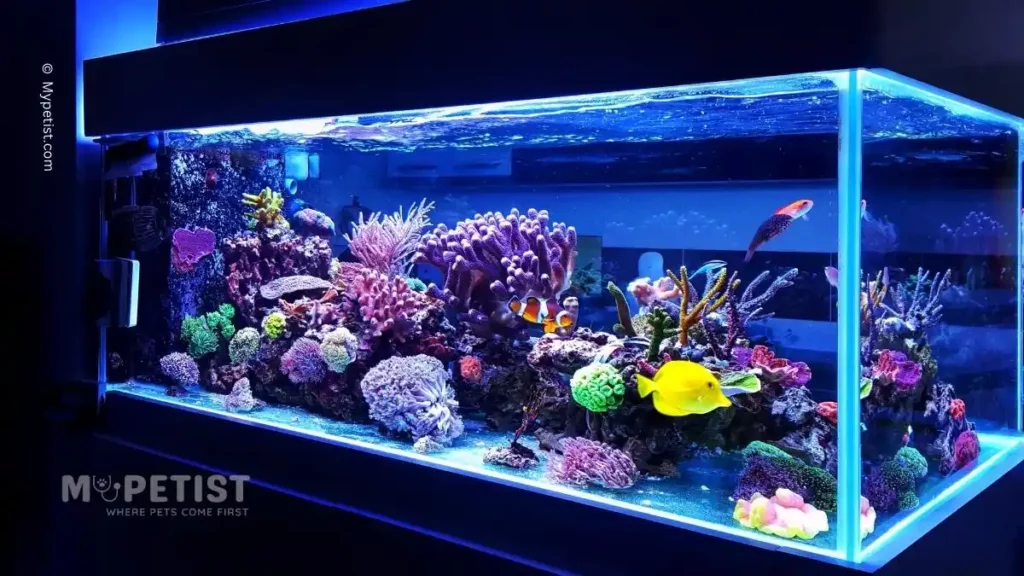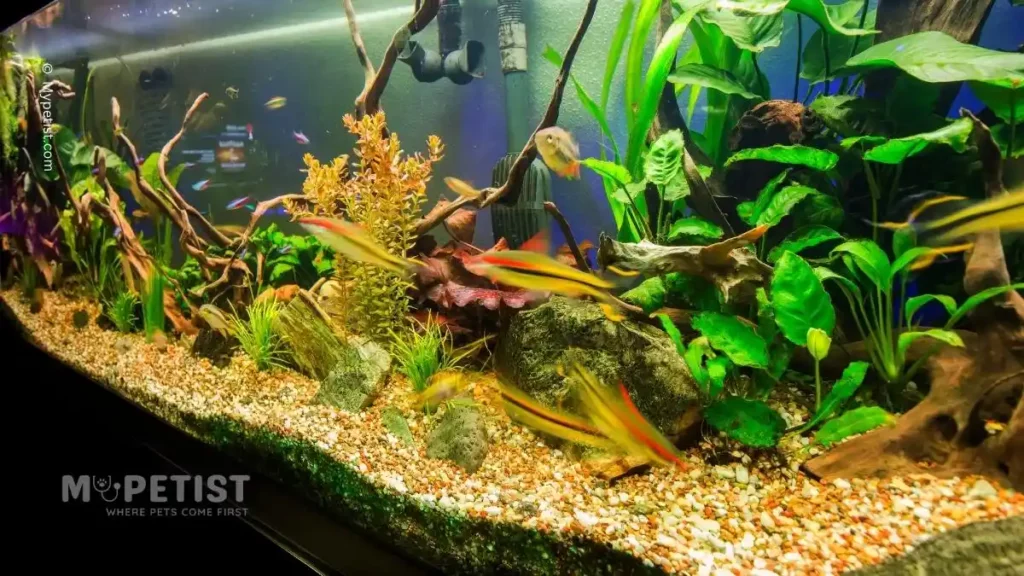Ultimate Guide To Lighting For Aquarium Plants
Planted aquariums are a great hobby for those who enjoy the beauty of underwater worlds. Aquarium plants add color and texture to any aquarium, creating a more natural environment for your aquatic pets. Growing aquarium plants, however, can be a challenging task. One of the most important factors that affects plant growth is lighting. In this article, we will provide you with a comprehensive guide to lighting for aquarium plants.
Table of Contents
- Aquarium Plants And Lighting: What You Need To Know
- Choosing The Right Light Intensity And Color Spectrum
- Types Of Aquarium Lighting For Planted Tanks
- Managing Algae Growth with Proper Lighting
- General Tips And Tricks For Aquarium Lighting
- Q: What are the lighting requirements for aquatic plants in a freshwater aquarium?
- Q: What type of light bulb is best for a planted aquarium?
- Q: What is the best planted aquarium light for growing plants?
- Q: How much light do freshwater plants need to grow?
- Q: Can I use fluorescent lighting for my planted aquarium?
- Q: How important is the quality of aquarium lighting?
- Q: How far should the light be from the bottom of the tank?
- Q: Are artificial lights sufficient for growing aquarium plants?
- Q: Can I use live plants in my aquarium?
- Q: Is there such a thing as too much light for an aquarium?
Aquarium Plants And Lighting: What You Need To Know
Understanding the Lighting Requirements of Aquarium Plants
The first step in providing adequate lighting for your planted aquarium is to understand the lighting needs of your plants. Like any other plant, aquatic plants rely on photosynthesis to survive. Photosynthesis is the process by which plants convert light energy into chemical energy, which fuels their growth. When it comes to aquarium plants, the amount and quality of light a plant receives is a crucial factor in its overall health and vitality.
The Best Lighting Setup for Your Planted Aquarium

There are several factors to consider when choosing the best lighting setup for your planted aquarium. One of the most important factors is the type of light source you’ll be using. LED lights have become increasingly popular among aquarium hobbyists due to their energy efficiency, long lifespan, and customizable features.
LED Lights vs. Other Types of Aquarium Lighting
While LED lights have several advantages over other types of lighting, such as fluorescent and incandescent bulbs, it’s important to consider the specific needs of your aquarium when choosing a light source. For example, if you have high light plants that require intense lighting, LED lights may be more suitable as they can provide much higher light intensity than other types of lighting.
Choosing The Right Light Intensity And Color Spectrum
Determining The Ideal Light Intensity for Your Aquarium Plants
The ideal light intensity for your aquarium plants depends on the specific type of plants you have. Generally, low light plants require about 15 to 30 watts per gallon, while high light plants require around 50 to 100 watts per gallon. It’s important to note that the amount of light needed also depends on the depth of the aquarium, as light penetration decreases with depth.
Choosing The Right Color Spectrum for Optimal Plant Growth
The color spectrum of your lighting is another important factor to consider when growing aquarium plants. The color spectrum determines the kind of light energy that plants receive, which in turn affects their growth and development. For example, blue light is ideal for promoting leafy growth, while red light is best for promoting flowering and fruiting. A full spectrum light, on the other hand, provides a balanced mix of all the colors of the spectrum, which can promote overall plant health.
The Importance of Light Duration and Timers
The duration of light exposure is another crucial factor in providing optimal lighting for your aquarium plants. Most aquarium plants require 8 to 10 hours of light per day to thrive, while some other plants may require up to 14 hours of light per day. It’s important to use timers to set the light duration and make sure that it remains consistent. Inconsistent lighting can cause stress in your plants, which may lead to stunted growth and even death.
Types Of Aquarium Lighting For Planted Tanks
The Benefits and Drawbacks of Fluorescent Lighting

Fluorescent lighting has been around for a long time and remains popular among hobbyists. One of the benefits of fluorescent lighting is that it’s relatively cheap and easy to find. However, fluorescent bulbs have a short lifespan and need to be replaced often. They can also generate a lot of heat, which can affect the temperature of your aquarium water.
The Pros and Cons of LED Lighting for Planted Tanks
LED lighting is becoming increasingly popular among aquarium enthusiasts due to their energy efficiency, low heat output, and customizable features. LEDs also have a higher output of light per wattage than fluorescent bulbs, making them a better option for high light plants. However, LED lights can be more expensive than other types of lighting.
The Different Types of LED Fixtures for Aquariums
There are different kinds of LED fixtures available for aquariums. Some LED fixtures are designed to provide high light intensity for high light plants, while others are meant for low light plants. It’s important to choose a LED fixture that caters to the specific lighting needs of your planted aquarium.
Managing Algae Growth with Proper Lighting
Understanding the Relationship Between Light and Algae Growth
Algae is a common problem that aquarium hobbyists face. Algae growth is a natural process and is sometimes caused by the improper lighting of your aquarium. When your aquarium receives too much light or too little light, algae can grow rapidly and compete with aquarium plants for nutrients and oxygen.
How to Determine the Right Amount of Light for Your Planted Tank to Prevent Algae Growth
One way to prevent algae growth is to provide your aquarium plants with enough light, but not too much. Determining the right amount of light to prevent algae growth can be tricky, as it depends on several factors, such as the type of plants you have, the light intensity, and the duration of light exposure. You can start by providing your plants with about 8 to 10 hours of light per day and adjust accordingly based on the growth and behavior of your plants.
Controlling Algae with CO2 Injection and Other Methods
CO2 injection is another effective way to control algae growth in your aquarium. CO2 helps aquatic plants grow faster and stronger, which can compete with algae for nutrients and inhibit their growth. Other methods of algae control include reducing the amount of organic matter in your aquarium and regular water changes.
General Tips And Tricks For Aquarium Lighting
Evaluating Your Plant Choices for Your Aquarium Lighting
Before investing in a lighting fixture, it’s important to evaluate the lighting requirements of the plants you intend to grow in your aquarium. Some plants require high light intensity, while others can thrive under low light conditions. Make sure to choose a lighting system that caters to the specific needs of your plants.
Calculating the Right Wattage of Lighting for Your Planted Tank
Calculating the right wattage of lighting for your planted tank can be tricky, as it depends on several factors, such as the type of plants you have and the depth of your aquarium. A general rule of thumb is to provide about 1 to 2 watts per gallon of water for a low light tank, and around 3 to 5 watts per gallon for a high light tank.
The Benefits of a Proper Light Spectrum for the Health of Your Fish and Plants
Providing your aquarium with a proper light spectrum not only promotes the growth and vitality of your plants, but also benefits the health of your fish. The right light spectrum can enhance the color and overall health of your fish, making them more vibrant and active.
In conclusion, lighting is a crucial factor in growing aquarium plants. Providing your plants with the right amount of light intensity, color spectrum, and duration can significantly enhance the health and vitality of your planted aquarium. With the right lighting setup, you can create a beautiful and healthy underwater world for your aquatic pets.
Q: What are the lighting requirements for aquatic plants in a freshwater aquarium?
A: Lighting plays a crucial role in the growth and health of aquatic plants in a freshwater aquarium. Proper lighting is necessary to provide energy for photosynthesis, which enables plants to grow and thrive. Generally, most planted aquariums require light that falls within the range of 4,500 to 7,000 kelvin.
Q: What type of light bulb is best for a planted aquarium?
A: The best type of light bulb for a planted aquarium is a full-spectrum bulb or a bulb specifically designed for freshwater plants. These bulbs provide a range of light that closely mimics natural sunlight, which is essential for plant growth. It is recommended to use LED or fluorescent lighting, as they are the most energy-efficient and emit less heat compared to other lighting types.
Q: What is the best planted aquarium light for growing plants?

A: LED lighting is the most popular choice for growing aquarium plants. LED lights are energy-efficient, long-lasting, and can provide intense light that can penetrate deep into the tank. It is important to choose LED lights that are specifically designed for planted tanks and provide the right spectrum of light for plant growth.
Q: How much light do freshwater plants need to grow?
A: The amount of light required for freshwater plants to grow depends on the type of plants you have. Most easy plants do well with 1-2 watts of light per gallon of water. For more demanding plants, a higher light level of 2-3 watts or more per gallon is required. It’s essential to monitor the light levels and adjust as necessary to ensure the best results.
Q: Can I use fluorescent lighting for my planted aquarium?
A: Yes, fluorescent lighting can be used for planted aquariums. However, it is important to choose the right type of fluorescent light, as not all fluorescents are suitable for growing plants. T5 fluorescent bulbs are the most popular choice, as they provide intense light that is suitable for plant growth. It is recommended to use a combination of T5 bulbs that emit both white and bluish tint light for optimal plant growth.
Q: How important is the quality of aquarium lighting?
A: The quality of aquarium lighting is essential to the health and growth of aquatic plants. Poor quality lighting can cause stunted growth, plant death, and algae growth. High-quality aquarium lighting that provides the right spectrum of light is essential to ensure healthy and vibrant plants in your aquarium.
Q: How far should the light be from the bottom of the tank?
A: The distance from the light to the bottom of the tank depends on the intensity of the light and the depth of the tank. In general, the light should be placed 8-12 inches from the bottom of the tank for low to medium light plants, while high light plants require the light to be placed closer to the water surface, around 4-8 inches. It’s essential to adjust the light distance accordingly to prevent algae growth or damage to your plants.
Q: Are artificial lights sufficient for growing aquarium plants?
A: Yes, artificial lights can provide sufficient light for growing aquarium plants. However, it’s important to choose the right type of light bulb and to ensure that the light provides the necessary spectrum of light. LED lights are the most energy-efficient and long-lasting option, and they come in a range of spectrums specifically designed for growing plants.
Q: Can I use live plants in my aquarium?
A: Absolutely! Live plants are a great addition to any aquarium, as they provide numerous benefits such as improving water quality and providing shelter for fish. However, it’s important to ensure that your aquarium lighting provides the necessary spectrum of light required for plant growth, and to choose plants that are suitable for your aquarium setup and level of expertise.
Q: Is there such a thing as too much light for an aquarium?
A: Yes, there is such a thing as too much light for an aquarium. Plants require a certain amount of light to grow and thrive, but too much light can cause excessive algae growth and damage to your plants. It’s important to monitor the light levels and adjust as necessary to prevent any negative effects on your plant or animal life.





🌿 Dive into the ultimate guide to lighting for aquarium plants on MyPetist! 💡 Enhance your aquatic pet’s environment with the right lighting setup. Learn about LED vs. fluorescent lights, preventing algae growth, and more! 🐟🌱
Follow and like for more pet care tips! 🐾 Share with fellow aquarium enthusiasts. 🤝
Read here: https://www.mypetist.com/lighting-for-aquarium-plants/
.
.
#mypetist #AquariumPlants #PetCare #LEDvsFluorescent #AlgaeControl #AquaticPets #PlantGrowth #UnderwaterWorld #PetEnthusiasts